From the heart of Paris to the picturesque Loire Valley in my neck of the woods, France’s rivers have captivated the imagination of artists, poets, and tourists alike. As you embark on this journey through the enchanting waterways of France, you’ll uncover the rich history, natural beauty, and cultural significance of the famous rivers in France: the Seine, Loire, Garonne, Rhône, and Dordogne rivers. Let’s take a closer look at them!
Short Summary
Explore four iconic rivers in France: the Seine, Loire, Garonne and Rhône.
Discover picturesque landscapes including near the Atlantic Ocean and beyond, historic sites and unique activities along each river’s banks.
Admire diverse wildlife and cultural heritage of these timeless waterways.
France’s Iconic Rivers: A Closer Look
France’s main rivers that have long been the lifeblood of the nation, providing irrigation, transportation, and cultural significance for centuries. The Seine, Loire, Garonne, and Rhône are the most celebrated rivers in France, each with its own unique charm and historical importance.
These rivers, referred to as “fleuves” in France, signify their considerable size and cultural significance.
Flowing majestically through a variety of landscapes, from the rolling hills of the Massif Central to the picturesque coastlines of the Atlantic Ocean and the Mediterranean Sea, these rivers have given rise to some of the most renowned cities and regions of France.
Nearly all of the French départements are named after one or two major rivers that that flow through them, highlighting their importance in shaping the nation’s history and identity.
The Loire River: Royal and Picturesque
Measuring 630 miles (1,013 km) in length, the Loire River — arguably the country’s most famous river — reigns as France’s longest river, originating in the Ardèche department’s Massif Central and then flows west before it drains into the Atlantic Ocean.
With its diverse flora and fauna, the Loire River is a haven for nature enthusiasts, hosting 164 species of birds, 57 species of fish, and an array of phytoplankton diversity. The important river boasts picturesque landscapes and its historic cities have inspired the likes of Auguste Rodin, J. M. W. Turner, and François Rabelais, among others.
The Loire Valley, situated between Sully-sur-Loire and Chalonnes, is recognized as a UNESCO World Heritage Site due to its abundance of remarkable Renaissance castles situated along the river. Don’t confuse it with the Loir Valley though!
As you journey along the Loire River, you’ll encounter renowned tributaries such as the Allier, Cher, Sarthe, Creuse, Vienne, and Loir rivers, each contributing to the rich tapestry of the Loire Valley.
Scenic landmarks and cities
Chateau de Chambord and Chateau de Chenonceau are some of the most famous landmarks along the Loire River, drawing visitors from around the world to marvel at their architectural splendor.
The Chateau de Chambord, a grand castle constructed in the 16th century, is an epitome of French Renaissance architecture, while the Chateau de Chenonceau captivates visitors with its gorgeous gardens and galleries, gracefully spanning the River Cher.
The Loire River is also home to several historic cities, such as Nantes, which boasts the workshop of Les Machines de l’Île and the Nantes Fine Arts Museum, and Le Puy-en-Velay, major city renowned for its cathedral, green lentils, and being a starting point for pilgrims on their journey to Santiago de Compostela.
These cities, along with the majestic castles and breathtaking landscapes, make the Loire River an unforgettable experience for all who visit.
Activities and attractions
The Loire River offers a plethora of activities for visitors to immerse themselves in the region’s natural beauty and history. Water activities such as canoeing, kayaking, and paddleboarding are popular choices for exploring the serene waterways, while traditional boat trips provide a relaxing way to take in the stunning scenery.
The Loire Valley lakes and reservoirs also offer the perfect setting for swimming, walking, and picnicking.
For those who prefer to keep their feet on solid ground when it comes to French rivers, the Loire River region offers ample opportunities for cycling and hiking, with picturesque trails meandering through vineyards, forests, and charming villages.
The Lot River, one of the longest canalized rivers in France, stretching over 400 kilometers, is another popular destination for cycling, swimming, fishing, and fine dining.
The Seine River: Heart of Paris
Flowing elegantly through the heart of Paris, the Seine River has long been an iconic symbol of the City of Light. From its humble beginnings in northern France, the Seine River flows for 482 miles (776 km) before emptying into the English Channel.
The river’s storied history includes its role in trade, Viking invasions, and as a muse for countless artists and writers, including Vincent van Gogh and Marcel Proust.
The Seine River gracefully embraces the Île de la Cité, home to the renowned Notre-Dame Cathedral of Paris, and has served as a backdrop for countless books, films, and television shows.
As you stroll along its banks, you’ll encounter some of Paris’ most famous landmarks, such as the Louvre, the Invalides, and the Eiffel Tower, each with its own unique charm and historical significance.
Here’s what a Seine river cruise is like >>
Historical significance
The Seine’s historical significance is intertwined with the city of Paris itself. The river has been an essential transportation route for goods and people since the Middle Ages, shaping the city’s development and growth. The banks of the River Seine were designated as a UNESCO World Heritage Site in 1991, further highlighting the river’s cultural importance.
In addition to Paris, the Seine River meanders through picturesque towns and cities such as Fontainebleau Forest, Melun, Corbeil, and Troyes, each offering their own unique charm and historical intrigue.
The Seine Valley of Normandy, for example, boasts remarkable white cliffs of chalk, the quaint town of Vernon, the ruined castle of Château-Gaillard, and the exquisite gardens of Claude Monet in Giverny.
Cruising the Seine
One of the most memorable ways to experience the Seine River is by taking a leisurely cruise along its serene waters. Various boat tours and cruises are available, offering visitors the opportunity to observe some of Paris’ most renowned landmarks, including the Louvre, the Eiffel Tower, the Musée d’Orsay, and Notre Dame Cathedral.
As you glide along the river, you can pause at some of the renowned bridges and visit the Notre-Dame Cathedral and the Sainte-Chapelle, both testaments to the city’s rich history and architectural prowess.
Luxurious cruises, such as those offered by Green River Cruises, provide an intimate and unforgettable experience, with routes from Ivry to the Musée du Louvre, via Boulogne Billancourt.
Whether you’re a first-time visitor or a seasoned Parisian, a cruise along the Seine River is a unique and enchanting way to explore the City of Light.
The Garonne River: Gateway to Bordeaux
The Garonne River, the third longest river in France, stretches for 612 miles and has played a pivotal role in the country’s history and economy. Flowing from Spain to the Atlantic Ocean, the Garonne River is the gateway to the beautiful city of Bordeaux, the capital of the Aquitaine region.
The river’s importance as a major inland shipping route in southwest France has connected the region with the rest of the country, fostering trade and tourism.
The Garonne River is not consistently navigable, with high springtime levels and low levels in August and September occasionally impeding navigation. Nevertheless, the river’s charm and historical significance continue to attract visitors from around the world, who marvel at the breathtaking landscapes and vibrant cities that line its banks.
Cultural impact
The Garonne River has been an integral part of French history for many years, serving as a prominent trade route and the venue of numerous battles. The river’s cultural impact can be seen in the various cities and towns it traverses, such as Saint-Gaudens, Toulouse, Agen, and Bordeaux, each with its own unique charm and historical significance.
The region surrounding the Garonne River is also renowned for its wine production, with the Bordeaux wine region attracting wine enthusiasts from around the globe. The river’s cultural impact extends beyond its banks, as the Garonne has inspired countless artists, writers, and poets throughout history, leaving an indelible mark on the French cultural landscape.
Recreational opportunities
The Garonne River offers a diverse range of recreational activities for visitors to enjoy. River cruises and sightseeing tours provide a unique perspective of the region, allowing tourists to appreciate the stunning landscapes and historic cities that line its banks.
For those who prefer more active pursuits, paddleboarding, jet skiing, and hiking are popular options, enabling visitors to immerse themselves in the natural beauty of the region.
Fishing enthusiasts will also find the Garonne River an ideal destination, as the European sea sturgeon, a critically endangered fish that can reach a maximum length of 20 feet, weigh up to 880lbs, and live for up to 100 years, calls the river home.
Whether you prefer leisurely cruises or adrenaline-pumping water sports, the Garonne River offers something for everyone.
The Rhône River: From the Alps to the Mediterranean
The Rhône River is the largest river in France in terms of depth and volume, flowing majestically from the Alps through the Massif Central and Lyon. Stretching for 812 km in length, the Rhône River is a vital inland trade route in eastern and central France, connecting the country to the Mediterranean Sea.
The river’s picturesque landscapes, historic cities, and renowned vineyards have attracted countless visitors, making it a popular tourist destination.
The Rhône Valley, with its lavender fields, olive trees, vineyards, and white limestone hills, is a captivating region that has inspired many artists, including Vincent van Gogh, who famously painted “The Starry Night Over the Rhone” in 1888.
As you travel along the Rhône River, you’ll encounter the cities of Lyon, Vienne, Valence, Avignon, and Arles, each offering its own unique charm and historical intrigue.
Economic importance
The Rhône River’s economic importance cannot be overstated, as it serves as a major inland trade route connecting the eastern and central parts of France. The river has been an essential transportation route for goods and services throughout history, shaping the development and growth of the cities and towns it traverses.
In addition to its role in trade, the Rhône River is also the source of hydroelectric power for the region, further enhancing its economic significance. The river’s ports, such as Marseille and Sète, serve as important trading hubs, connecting the country to the Mediterranean Sea and beyond.
Tourist highlights
The Rhône River boasts a wealth of tourist attractions, showcasing the region’s rich history, culture, and natural beauty. The cities of Lyon, Geneva, Vienne, Valence, Beaujolais, Gorges de l’Ardèche, and La Dombes offer a diverse range of experiences, from historic landmarks and museums to picturesque landscapes and vineyards.
The Rhône Valley is renowned for its vineyards and wine, with the Chateauneuf-du-Pape being one of the most famous appellations. Wine enthusiasts will delight in exploring the region’s many wineries and sampling the unique flavors of the Rhône Valley wines.
Whether you’re a history buff, a wine connoisseur, or simply seeking a tranquil escape, the Rhône River is a destination that offers something for everyone.
The Dordogne River: A natural wonderland
The Dordogne River, the fifth longest river in France, is a true natural wonder, stretching approximately 545 kilometers through breathtaking landscapes, historic castles, and fascinating caves. The river’s diverse wildlife, including European sturgeons, salmon, otters, and various bird species, makes it an ideal destination for nature enthusiasts.
The Dordogne and Perigord region, with its rich history stemming from the Hundred Years War between the English and the French, is a classic vacation destination, attracting visitors from around the world. From the enchanting castles that dot its banks to the serene waters that invite exploration, the Dordogne River is a natural wonderland that captivates all who visit.
Castles and caves
The Dordogne River is home to some of the most impressive castles in France, including Château de Castelnaud, Château de Beynac, Chateau de Commarque, Château de Puymartin, Château des Milandes, and Hautefort. Each castle offers a unique glimpse into the region’s storied past, with stunning architecture and well-preserved interiors that transport visitors back in time.
In addition to its magnificent castles, the Dordogne River region is also renowned for its fascinating caves, such as the Vézère Valley, a UNESCO World Heritage Site known for its numerous prehistoric sites. The tributary of the Dordogne River, the Vézère, boasts picturesque landscapes and prehistoric sites that draw visitors from around the globe.
Wildlife and conservation
The Dordogne River’s diverse wildlife is a testament to the region’s commitment to conservation and preservation. The river is home to a wide range of species, including European sturgeons, salmon, otters, ducks, herons, kites, kingfishers, swans, cormorants, egrets, common coots, and grebes. This habitat provides an important source of food and shelter for these animals.
One of the few rivers in the world to exhibit a tidal bore, the Dordogne River is a unique natural phenomenon that continues to fascinate visitors and locals alike. The river’s conservation efforts ensure that future generations can enjoy the beauty and wonder of this natural treasure, preserving its rich wildlife and pristine landscapes.
Summary
France’s rivers, from the iconic Seine and picturesque Loire to the historically significant Garonne and enchanting Dordogne, offer a diverse array of attractions and experiences for visitors.
As you explore these majestic waterways, you’ll uncover the rich history, cultural significance, and breathtaking natural beauty that have inspired countless artists, poets, and travelers throughout the ages.
Whether you’re seeking a tranquil escape, an adrenaline-pumping adventure, or a journey through history, the rivers of France await to captivate your senses and create unforgettable memories.
Frequently asked questions about French rivers
What are the three famous rivers in France?
The three famous rivers in France are the Seine, Rhone and Loire. The Seine is a 777-kilometre-long river in northern France.
The Rhone is located in east-central France. The Loire is the longest river in France at a length of over 770 kilometres.
What are 2 famous rivers in France?
France is home to two renowned rivers, the Seine and the Rhone. The former is 777 kilometers in length and crosses through northern France, while the latter is a department of East Central France and is known as the longest river in the country, the Loire.
What is the iconic French River?
The Seine River is an iconic river in France that has been praised for its beauty and significance for centuries. Rising in the Alps, it flows 777 km (483 mi) through Paris before emptying into the English Channel at Le Havre.
Its drainage basin covers most of northern France, making it a key landmark of the country.
What are the 3 longest rivers in France?
France is home to some of Europe’s longest rivers, with the Loire, Rhone and Seine ranking among the top three. These majestic French rivers offer an incredible range of sightseeing opportunities, making them popular tourist destinations.
From kayaking and canoeing to boat tours and river cruises, there are plenty of ways to explore the rivers of France. Whether you’re looking for a leisurely day trip or a longer adventure, the rivers of the river of the river of the river are perfect.
Is La Seine the longest river in France?
No, the Seine is not the longest river in France. The Loire River is the longest river in France at 1,020 km, while the Seine River is the second longest river at 780 km.
***
Hope you enjoyed this look at some of the most famous rivers in France!
What other rivers have you visited?


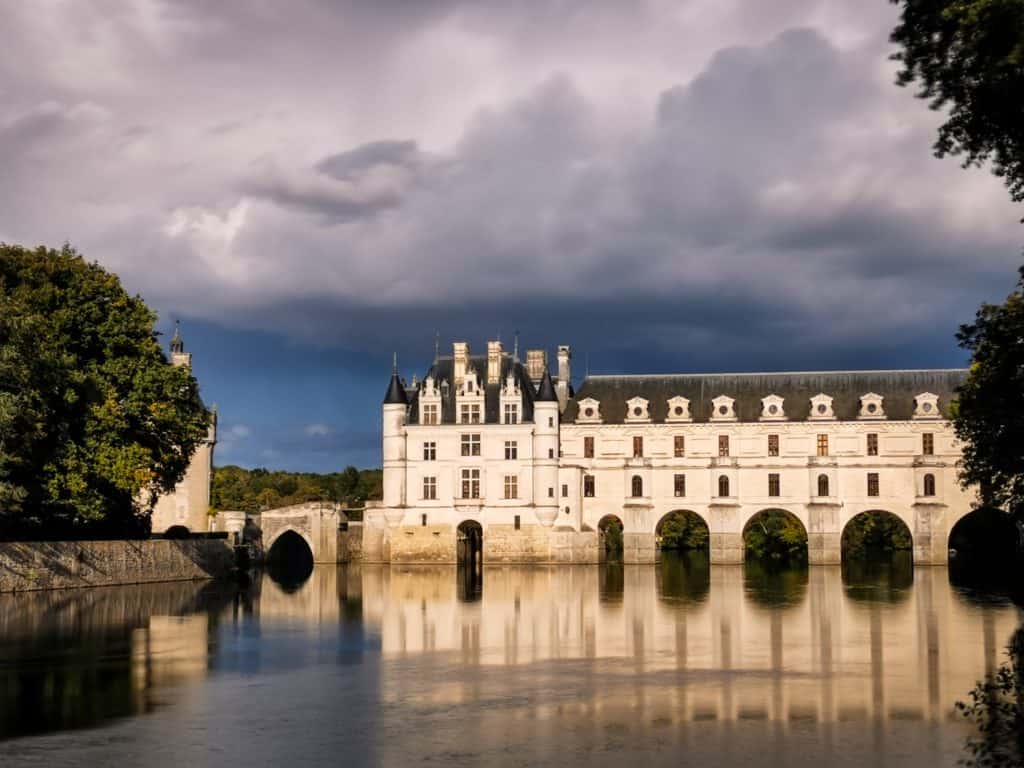
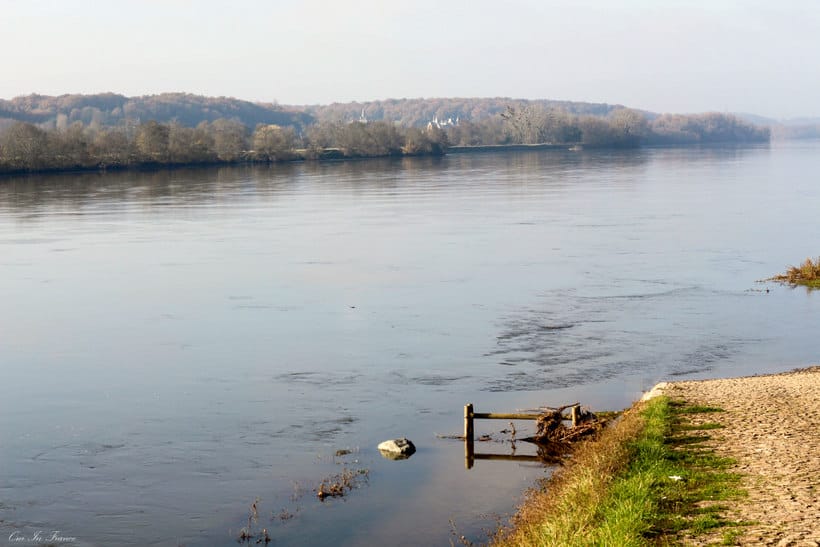



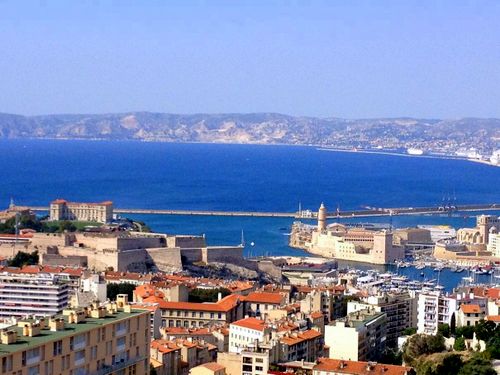

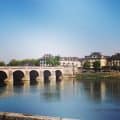

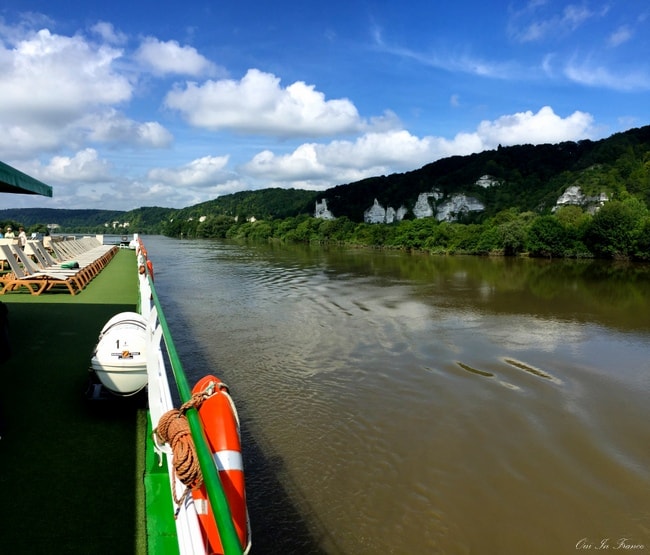
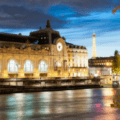

Leave a Reply